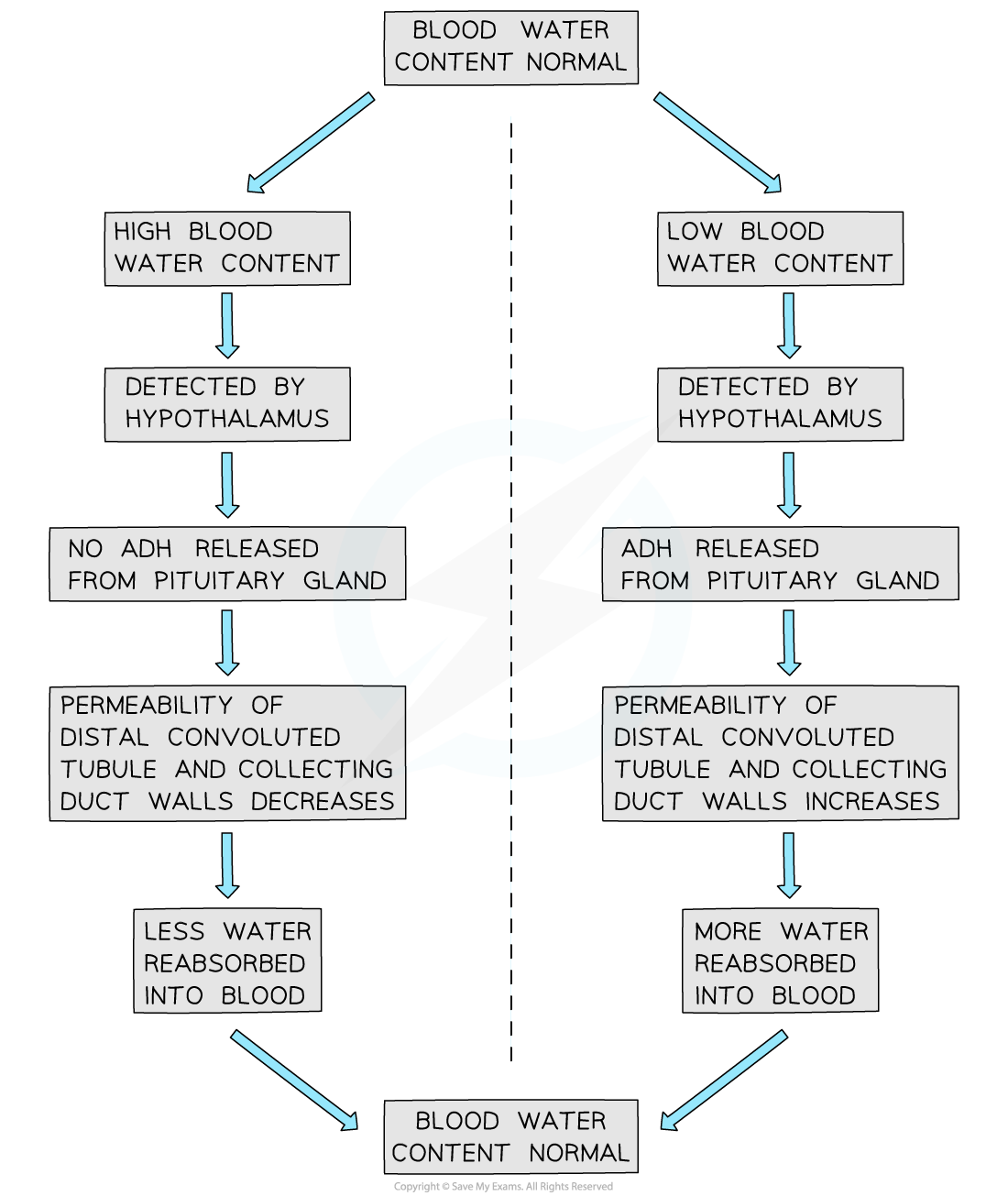Control of Blood Water Potential (AQA A Level Biology): Revision Note
Exam code: 7402
Osmoregulation
The control of the water potential of body fluids is known as osmoregulation
Osmoregulation is an example of homeostasis
Specialised sensory neurones, known as osmoreceptors, monitor the water potential of the blood
Osmoreceptors are located in the hypothalamus of the brain
Low blood water content
When blood water content decreases, e.g. due to dehydration:
osmoreceptors detect a decrease in the water potential of the blood
Water moves out of osmoreceptor cells down a water potential gradient, causing the cells to shrink slightly
nerve impulses are sent along sensory neurones to the posterior pituitary gland
nerve impulses stimulate the posterior pituitary gland to release antidiuretic hormone (ADH) into the blood
ADH increases the water permeability of the collecting ducts
the kidneys reabsorb more water
water molecules move from high water potential in the collecting duct, to low water potential in the medulla
a small volume of concentrated urine is produced

ADH and the kidneys
ADH alters water reabsorption by increasing the water permeability of the cells lining the collecting duct; this occurs as follows:
ADH molecules bind to receptors on the surface of cells lining the collecting duct
vesicles containing aquaporins fuse with the membranes of the collecting duct cells
the number of aquaporins in the cell membranes is increased, increasing the permeability of the membrane to water


High blood water content
When blood water content increases, e.g. due to high fluid intake
osmoreceptors detect an increase in the water potential of the blood
nerve impulses are sent along sensory neurones to the posterior pituitary gland
these nerve impulses cause the posterior pituitary gland to release less ADH
water permeability of the collecting ducts decreases
the kidneys reabsorb less water
a large volume of dilute urine is produced


Unlock more, it's free!
Did this page help you?